MVP-app Development for Startups – 7 Steps to Avoid Mistakes
Using the MVP development for startups to launch an app is a tried and true method for accomplishment. Airbnb, Uber, Fb, Spotify, Buffer, Amazon, and many other apps many of us have on our mobile phones began as minimum viable products (MVP).
This strategy allowed these startup companies to become examples of success and close down when the chance came. Their concept was novel, and they won’t waste time refining the item. They only presented their concept in a rough form and are still trying to improve it based on user responses.
Airbnb began as a simple website and Uber as a black limo service. Facebook started as a directory limited to Harvard university students, and Buffer as a two-page spot initiated with a tweet. Most innovation stories begin with a bare-bones version of the application that needs to be validated. After the product was validated, the owners continued to develop it, adding new features and increasing market share.
It’s no surprise that most startups with innovative app ideas go down the MVP path. If you’re one of them, here’s all you need to learn about creating an MVP for an app setup and everything else that passes into it.
The Best possible Approaches to Build an MVP Application
To introduce an app, many strategies can be implemented. This is about how they interpret an MVP and the first variant of a new startup app. The first version may be a visual demonstration explaining the features and capabilities. Whereas, for others, it may be the fully finished edition. Below mentioned strategies could be used in building MVP for startups:

No MVP Product
You seek approval for your notion solely through visual analysis at this stage. This method does not require any coding because you do not construct anything. You generate diagrams and share research projects, blogs, and movies. You do it to get feedback on the concept before moving forward with app development.
Mockup of a Product
The next step that several app businesses take to create their MVP is to create product mockups. This is merely a simplified mockup of their concept, made without the need for any complex or emerging features.
MVP for a Single Feature
Among the most popular strategies startup applications use to create an MVP is, to begin with, a feature space app. The MVP is first built with the central aspect, and the remaining features are introduced in subsequent models.
MLP
An MLP is a Minimum Loveable Product with the minimum necessary features to entice customers to buy it. It implies that the very first version of the program should meet the primary conditions. This way, it will make somebody else fall in love with it rather than tolerate it.
EVP
EVP is an abbreviation for an Exceptional Viable Product. It is a strategy that not every corporation strives to do, but then only very few employ. At this stage, you need to begin with one of the most refined versions of your application. Your application development unit needs to spend time optimizing the product. It will tempt new consumers with an outstanding experience in this first edition. Because of the quality of the product, there is a significant difference between an MVP and an EVP.
Prototype
This sort of startup app is a prototype for the app but doesn’t even include basic features. This prototype assists startups in visualizing their MVP and serves as a foundation for the same.
Essential Steps for MVP Application Development
We have several steps involved in developing a minimum viable product. However, the actual implementation takes a little time during this phase apart from app development. Yet, we need to spend most of our time on preliminary research, ideation, competitive analysis, and user research. There are several critical steps involved in the MVP development process for a company. Let’s take a look at them.
1. Market Research
Competitive research is the key to developing MVP software. Nearly 42% of startup companies cease because their application’s notion does not meet market demand. Undoubtedly, every startup must conduct extensive market research before investing any assets.
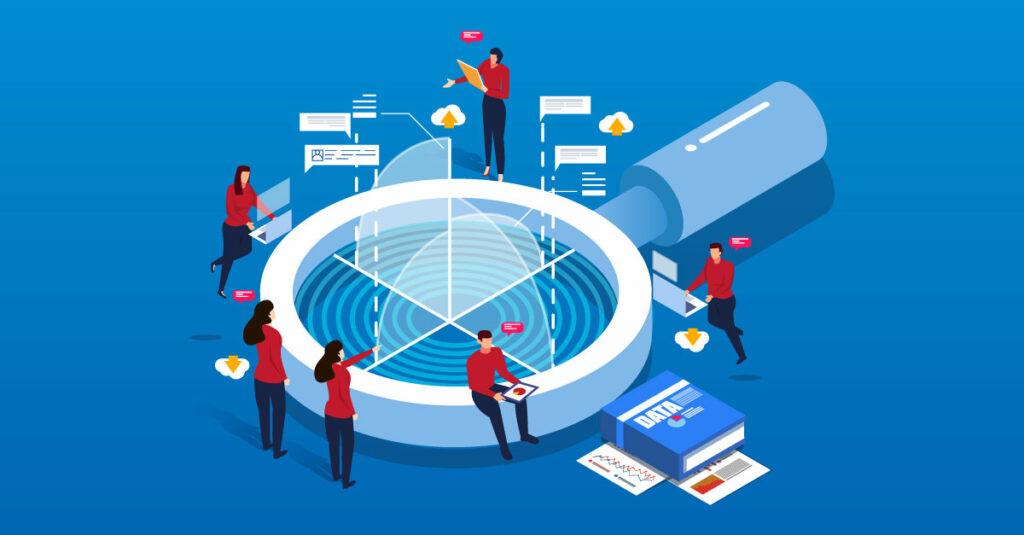
That’s where you research to validate your idea. You interpret research studies, watch various videos/blogs, and collect data from surveys. You do this to determine whether the product/service you intend to provide is required. To conduct a thorough investigation, consider the following questions:
- What is the primary issue that this app will address?
- Who will be interested in using your app?
- Will the intended audience or buyer persona you develop to be prepared to pay for it?
- Is already there a similar app on the market? What distinguishes your app?
- What is the MVP app’s most significant selling point that will set it apart?
2. Brainstorming Around the Idea
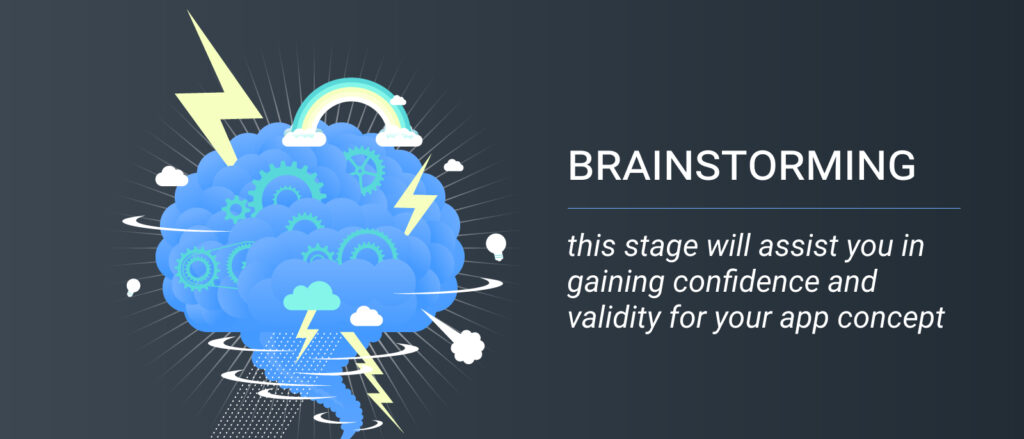
Once you have done market research and determined that there may be a market necessity for your MVP app, the next step is to verify the idea. That’s where you consider the product’s unique selling point and evaluate what truly stands.
The responses you discovered in the previous stage are significant in brainstorming. You must also evaluate the replies to guarantee that you are on the right path. This stage will assist you in gaining confidence and validity for your app concept.
3. Outline The User Flow
Each app has a workflow that describes the route a user will take once they enter the app. You will need to plot the point of view and start creating the trek in this phase. In this section, you depict the product from the user’s point of view. It will provide more information about how the visitor will join and browse the app.
Let’s look at an example to help you understand this effectively. For example, suppose you’re creating a ride-hailing app similar to Uber. The first MVP would include a user flow that had steps such as entering the target name, finding the ride, reserving the ride, and making a payment.
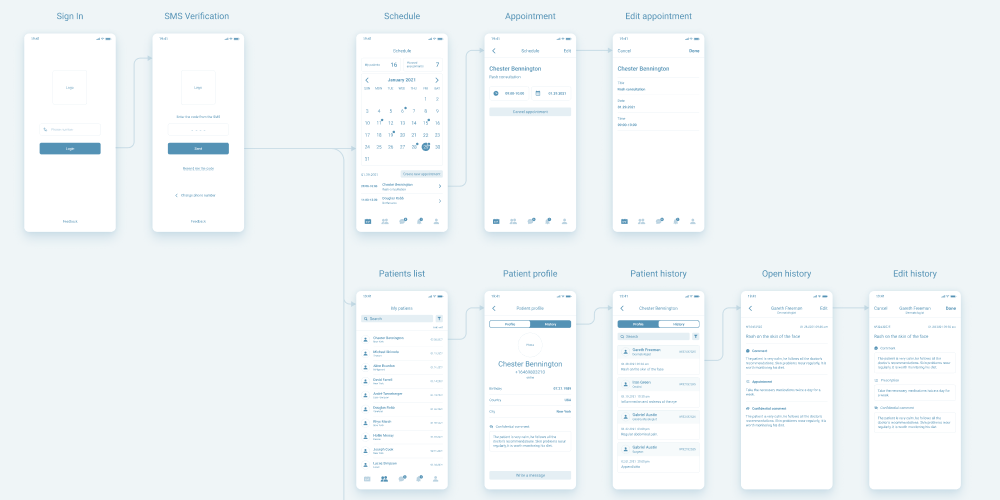
In the preliminary MVP, this is the standard user flow. You’ll get a better interpretation of how you choose to construct your MVP software. To help comprehend this, highlighting user flow implies describing the steps a user will take to achieve the app’s primary goal. In our instance, we’ll book a ride and pay for it.
You must examine your app concept or the operating model that you are employing. Once that is completed, you will quickly determine what behavior you want individuals to choose when entering the app. This step will assist in deciding which pages to generate and what kind of tabs to include.
4. Define & Prioritize MVP Features
After you’ve formed the user flow, you’ll need to start dictating and emphasizing the characteristics of the first variant. This is among the most crucial steps.
To accomplish this, begin by enumerating all of the characteristics that will be included in each step. As a result, you will get an advanced and extended set of features in the app. However, this is not an extensive list. It is not necessary to add all the elements in the first edition. That’s where functionality prioritization comes into play. To begin, divide the features into two categories: core characteristics and add-ons. To start prioritizing, follow the steps outlined in the image below.
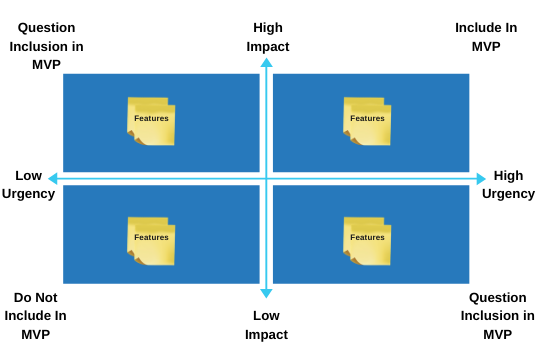
You will close up with a bunch of the MVP app’s entirely essential features. These will be the most important and impactful characteristics of the app.
5. MVP Development
Now that you’ve determined the user flow and the components needed in each step, it’s time to put together the MVP. That’s where the entire project development begins. They should start by shortlisting the tech used before allocating developers’ tasks to build the working model.
A startup can take several methods of developing its minimum viable product. Entrepreneurs can select one of three methods to startup MVP development based on cost allocation, technological capabilities, and in-house knowledge. They are as follows:
- Hiring remote devs/ teams
- Create an in-house MVP app development group
- Outsourcing of the app building to an MVP development company
6. MVP App Launch
The launch would be the next critical step in developing an MVP. When dealing with an app MVP, it is essential to research the framework you intend to launch. This is the stage at which you must select the best platform for your MVP app release.

Because it is an MVP mobile application, you must guarantee that it is not required to be accessible for all operating systems such as iOS, Android, or iPad. It is simple to get started with just one forum. As a result, you need to determine the platform for your app MVP has been evolved for and plan for its launch.
Ensure that you have formed a marketing copy to boost the MVP app launch directly aimed at the early prototype user personas.
7. Measure, Learn & Implement
For every MVP mobile app, the post-launch duration is critical. This is the main point of using the MVP strategy. You create the MVP, track its achievement, learn from user feedback, and incorporate it into future iterations or alerts. Here are some methods for checking the progress of your MVP app:
Feedback
In this section, you will gather feedback from early adopters by doubting them about their perceptions.
Engagement
Check the levels of engagement, hours spent, a route they carry, and clicks they create. This will tell you how engaged they were with the MVP app.
Sign-ups
A number of people sign up for your app through the framework it was launched. It should be distinct from the Alpha testers (family and friends) who you invite to participate.
Active Users
Check the number of daily and monthly active users and see how many users are actively utilizing your app.
Churn Rate
This is a critical metric for determining how many people are still using the MVP app and how many have uninstalled it.
Getting Started to Build the MVP
Once you get all the required knowledge about MVP app development, it’s time to put your plans into practice. You can select the best framework for creating your MVP app. Evaluate your idea, and be aware of the resources and expenses that will be required. When you have it all ready, you can begin the development stage.
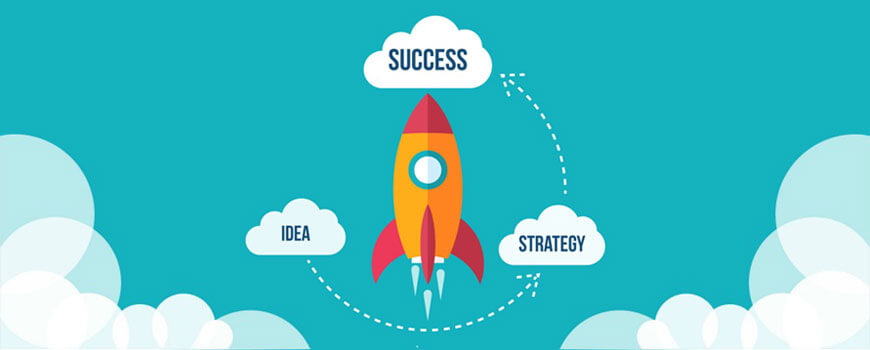
Joining forces with mobile app development companies is one of the quickest ways for startup companies to construct a minimum viable product. They bring the necessary knowledge and experience to a startup company. Furthermore, they will help you at every stage of development. From the market testing and ideation phase of MVP app development to improving the team for the procedure and the actual product and release of the app, they will give it all.
Final Words
OSSYSTEM has helped large numbers of entrepreneurs with MVP development for startups. You can start sharing your application with us, and we will get started on it within just a few days. We will decide the best technology, assist you in forming a team, and get you to begin with development. Usually, it will take 4 to 8 cycles to complete an MVP as your app’s nature. We guarantee rapid development and help you get your concept to market as soon as possible.
![]()
Subscribe to us










